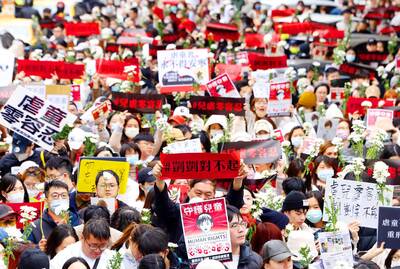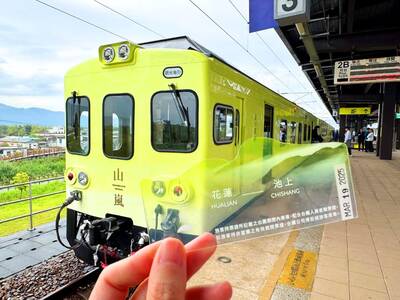Recent media interest about new types of submarines being developed by the People’s Liberation Army Navy (PLAN) could provide important clues about China’s naval capabilities and intentions, a specialist on China said in a recent article.
“Whereas the development and deployment of the Chinese navy’s surface fleet have been prominently displayed in unprecedented scale in recent naval exercises both in the South and East China Sea, the expansion of China’s subsurface fleet appears to have been slowed in recent years,” Russell Hsiao, editor of the China Brief, a publication of the US-based Jamestown Foundation, wrote in the publication’s latest edition.
From 2007 until this year, he said, the total number of submarines deployed in the PLAN was steady, rising by a single vessel, to 63, Hsiao wrote.
While the scope of the PLAN’s development remained to be seen and would depend on tested capabilities rather than media photos and speculation, the increased incidence of reports on new submarines could nevertheless provided important clues about Beijing’s strategic outlook, he said.
“In this context, these reports raise interesting questions about what is known regarding the pace of investments that China has undertaken to increase stealth, missile capacity, survivability and the capability to project its submarine force both regionally and globally,” he wrote.
Early last month, a Hong Kong-based media ran a story based on a photo of a new conventionally powered attack submarine that had been circulating on the Web for several weeks. The SSK submarine was allegedly developed by state-owned China Shipbuilding Industry Corp, China’s largest shipbuilder, the report said.
The People’s Liberation Army (PLA) has yet to officially acknowledge reports that the new submarine has stealth capabilities.
“Chinese academic engineering literature cited by a prominent Western defense magazine supports the fact ‘that the PLA has also been researching fuel cell AIP engine technology — with the PLA having benefited via Chinese academics from several conferences with German fuel cell technology experts,” the report said, citing Jane’s Defense Weekly.
“The addition of an AIP system could allow a Chinese submarine to operate underwater for up to 30 days on battery power, and would make the Song and Yuan submarines inaudible to existing US surveillance networks-and US subs,” the report said.
Reports also claim that China would finish testing and deploy two additional Yuan-class submarines by the end of next year, Hsiao wrote, adding that if reports were true, it would confirm the belief, held by some experts, that the apparent slowdown in the PLAN’s expansion was only a transitory phase and that its submarine fleet appeared set to resume its upward trajectory.
These revelations coincide with the recent sighting of a new Type 093 Shang-class nuclear-powered attack submarine docked at a Chinese naval base in Sanya, on Hainan Island. A photograph obtained by Japan-based Kyodo News showed two nuclear-powered submarines docked at a quay on the base.
Hsiao wrote that the reports and images showcasing new submarines and deployments underscored Beijing’s growing assertiveness, which has also been accompanied by an increasing incidence of sorties and exercises in waters close to Taiwan, Japan and South Korea.

Taiwan yesterday condemned the recent increase in Chinese coast guard-escorted fishing vessels operating illegally in waters around the Pratas Islands (Dongsha Islands, 東沙群島) in the South China Sea. Unusually large groupings of Chinese fishing vessels began to appear around the islands on Feb. 15, when at least six motherships and 29 smaller boats were sighted, the Coast Guard Administration (CGA) said in a news release. While CGA vessels were dispatched to expel the Chinese boats, Chinese coast guard ships trespassed into Taiwan’s restricted waters and unsuccessfully attempted to interfere, the CGA said. Due to the provocation, the CGA initiated an operation to increase

A crowd of over 200 people gathered outside the Taipei District Court as two sisters indicted for abusing a 1-year-old boy to death attended a preliminary hearing in the case yesterday afternoon. The crowd held up signs and chanted slogans calling for aggravated penalties in child abuse cases and asking for no bail and “capital punishment.” They also held white flowers in memory of the boy, nicknamed Kai Kai (剴剴), who was allegedly tortured to death by the sisters in December 2023. The boy died four months after being placed in full-time foster care with the

A Taiwanese woman on Sunday was injured by a small piece of masonry that fell from the dome of St Peter’s Basilica in the Vatican during a visit to the church. The tourist, identified as Hsu Yun-chen (許芸禎), was struck on the forehead while she and her tour group were near Michelangelo’s sculpture Pieta. Hsu was rushed to a hospital, the group’s guide to the church, Fu Jing, said yesterday. Hsu was found not to have serious injuries and was able to continue her tour as scheduled, Fu added. Mathew Lee (李世明), Taiwan’s recently retired ambassador to the Holy See, said he met

The Shanlan Express (山嵐號), or “Mountain Mist Express,” is scheduled to launch on April 19 as part of the centennial celebration of the inauguration of the Taitung Line. The tourism express train was renovated from the Taiwan Railway Corp’s EMU500 commuter trains. It has four carriages and a seating capacity of 60 passengers. Lion Travel is arranging railway tours for the express service. Several news outlets were invited to experience the pilot tour on the new express train service, which is to operate between Hualien Railway Station and Chihshang (池上) Railway Station in Taitung County. It would also be the first tourism service